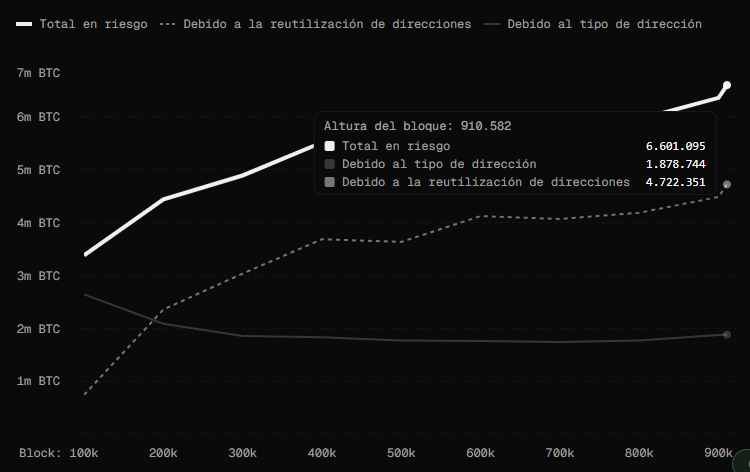The risk that represents the malicious use of quantum computing for global cybersecurity is a latent mystery: it is not known when the power of its effects will come. There are few certainties, and this is one: if the “Q-Day” It happened today, cryptocurrency exchanges would be at risk of bankruptcy. This is demonstrated by the Project Eleven site in its Bitcoin-Risq-List.
He “Q-Day”or “quantum day”, it is the hypothetical moment in which an evil actor with a quantum computer manages to break encryption algorithms such as those used in Bitcoin, traditional banking and other digital security systems.
In this scenario, funds stored by Exchange They could be vulnerable to an attack that uses the quantum algorithm of Shor to decipher the cryptographic keys that protect the assets of its users.
According to Project Eleven, exchanges such as Binance, Robinhood, OKX and Bitfinex maintain significant amounts of Bitcoin in cold wallets associated with addresses potentially vulnerable.
The most notable case is a cold coin of Binance, which It concentrates almost 250,000 BTC in addresses of the P2SH type (pay script hash). Robinhood accumulates 140,574 BTC in a direction of the P2WPKH type (pay for public key witness).
OKX also stands out with 44,570 BTC in P2SH and Bitfinex, with 130,010 BTC in P2WSH (pay HSHRPT witness).
In total, the source estimates that more than 6.6 million BTC, equivalent to More than 761 billion dollarsthey are at risk of a quantum attack due to the type of address they use or thanks to the reuse of addresses to spend exits (UTXO).


What makes these directions vulnerable to quantum?
The main reason for vulnerability is related to Direction reuse in cold walletsusual practice in centralized exchanges.
The reuse of addresses implies that the exchanges execute many transactions from the wallets associated with a single public direction, facilitating a quantum attacker deduce private keys Once the current encryption is vulnerable.
Algorithms such as Shor can factor large numbers used in P2SH, P2WPKH and P2WSH, exposing funds if measures such as post-chartography are not taken. At the time, cryptocurrency exchanges, sooner rather than later, they must move their coins to new 2PKH, P2WPKH, P2SH or P2WSH and not spend BTC outputs, so that the public keys of their cold wallets are not relieved.
However, this would introduce other problems, such as the lack of transparency of its reserve tests, which would not be well seen by users and regulators. At the same time, it could cause liquidity problems, while exchanges need to rotate capital in a constant way to meet the buying and selling demand of their users.
While no one knows with certainty when arrival of the “Q-Day” Cryptonotics reported some opinions of experts and specialists.
For example, Adam Back, blockstream co -founder, estimates that it will occur in “1 or 2 decades.”
Ignacio Hagopian, developer of the Ethereum Foundation (EF), suggests a range of and other analysts see it closer.
In addition to temporary estimates, another obstacle that would face a potential quantum malignant actor would be The monetary cost which would mean a task of that magnitude.


